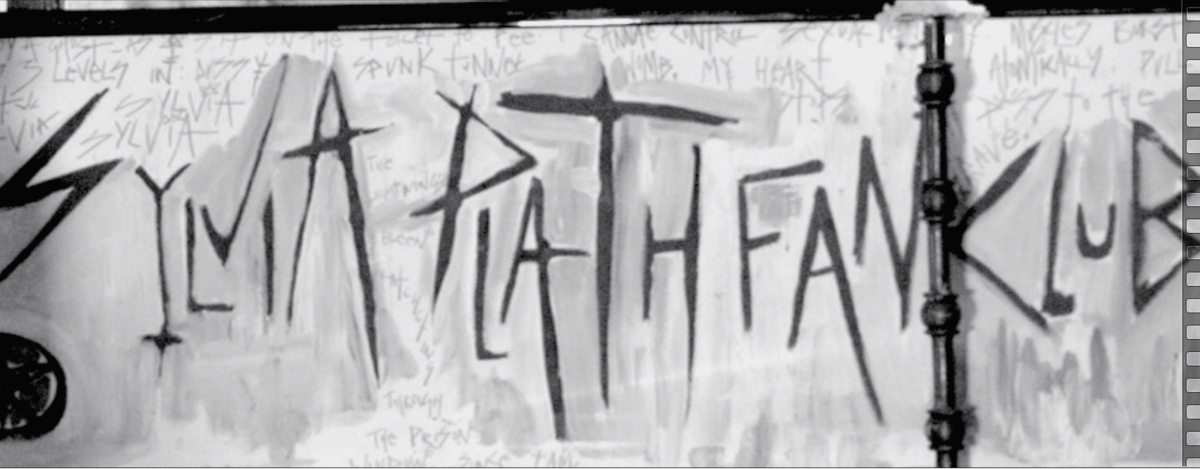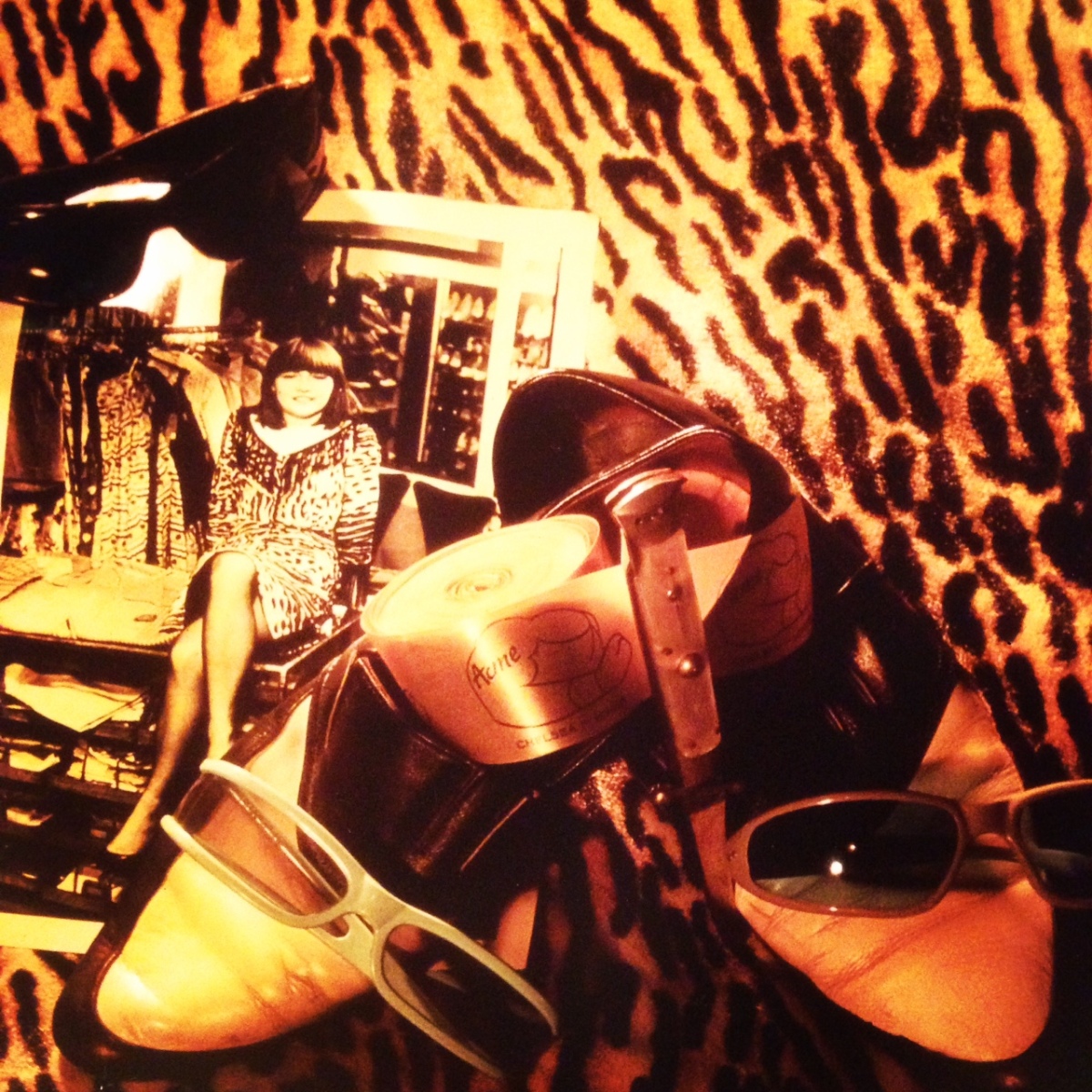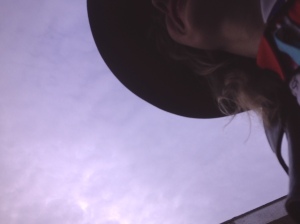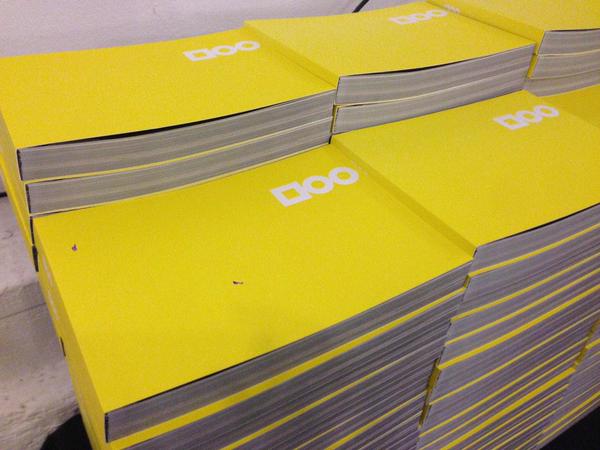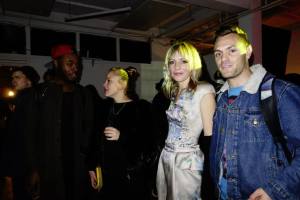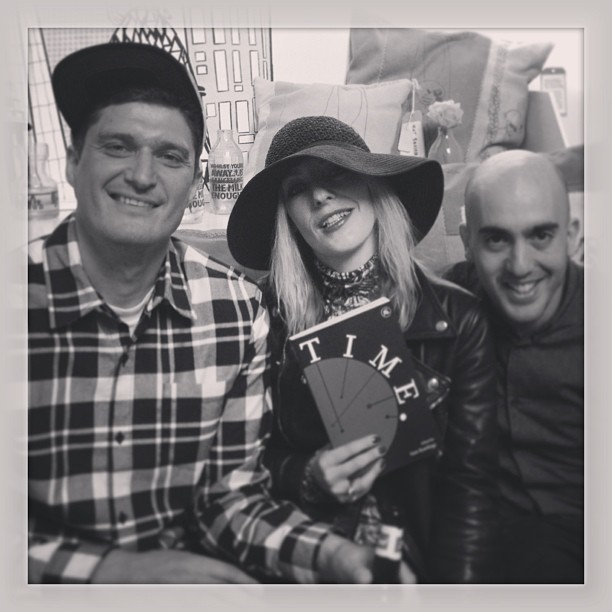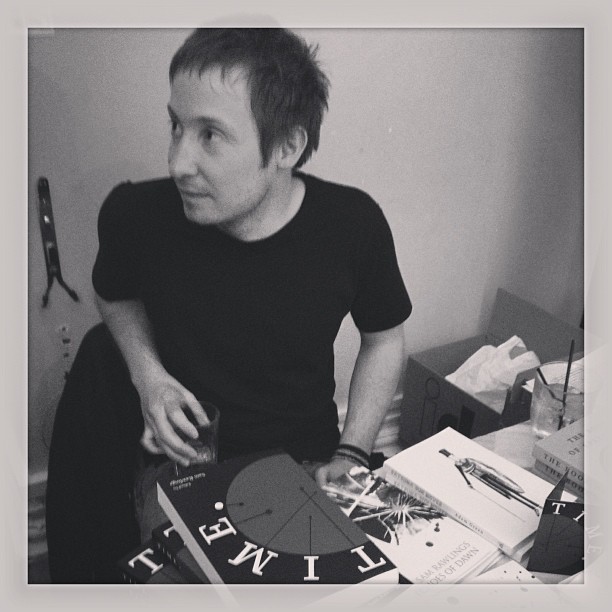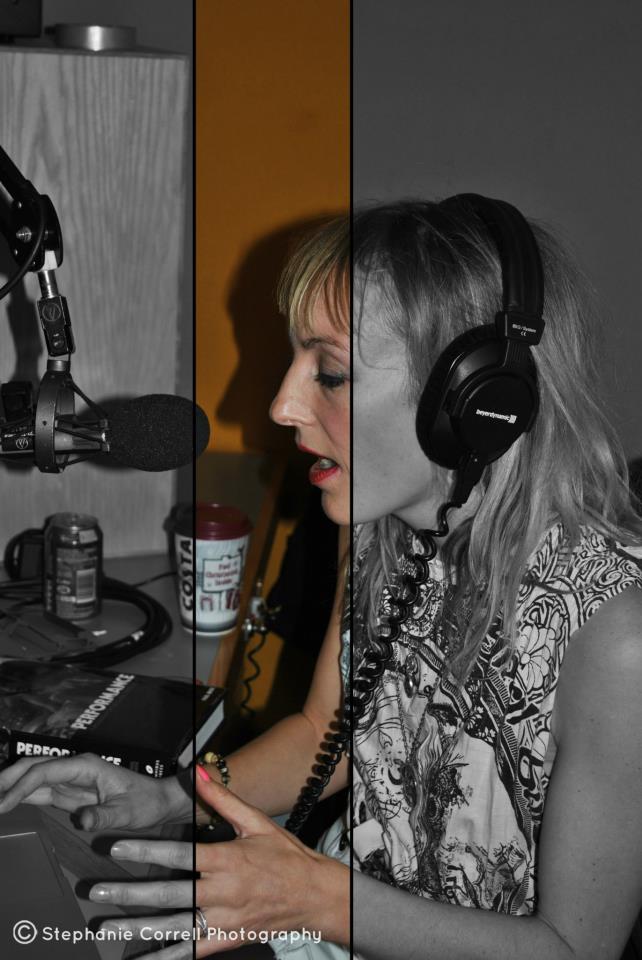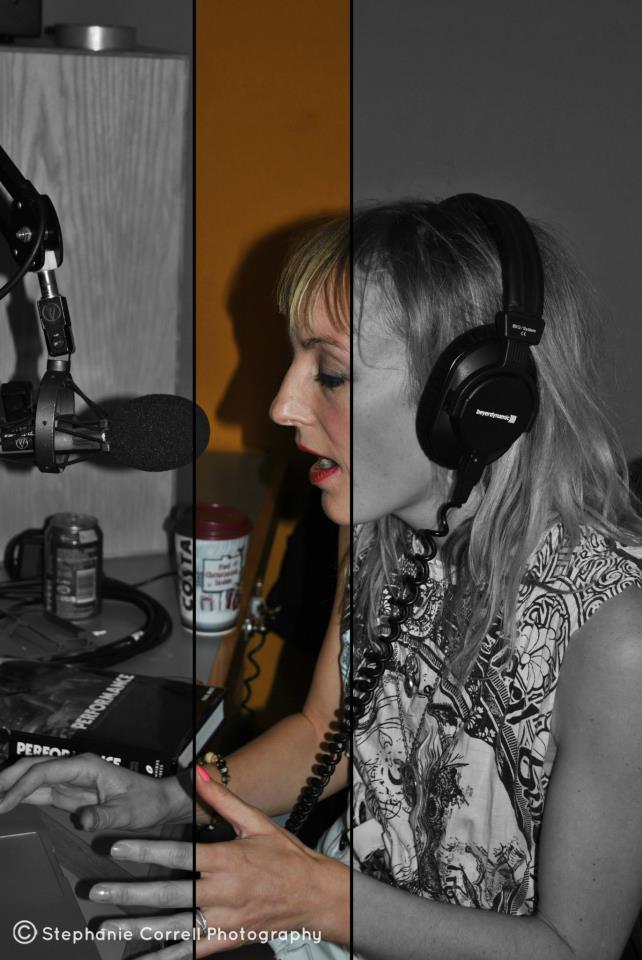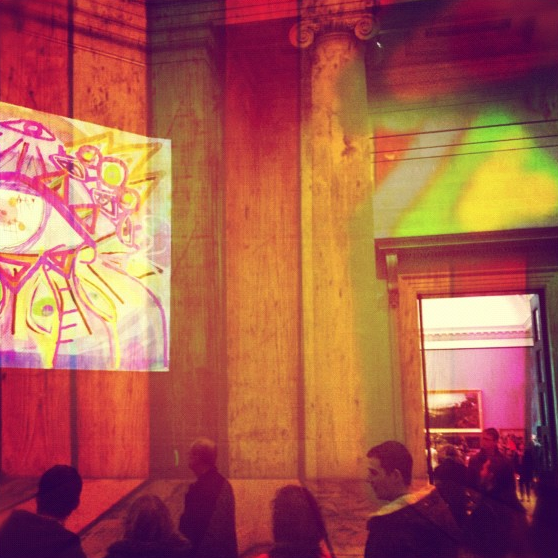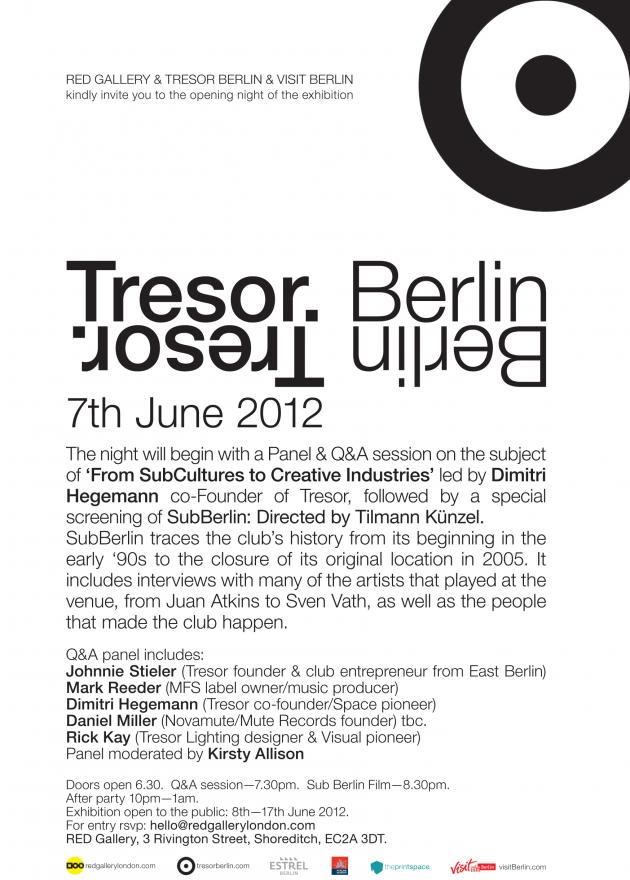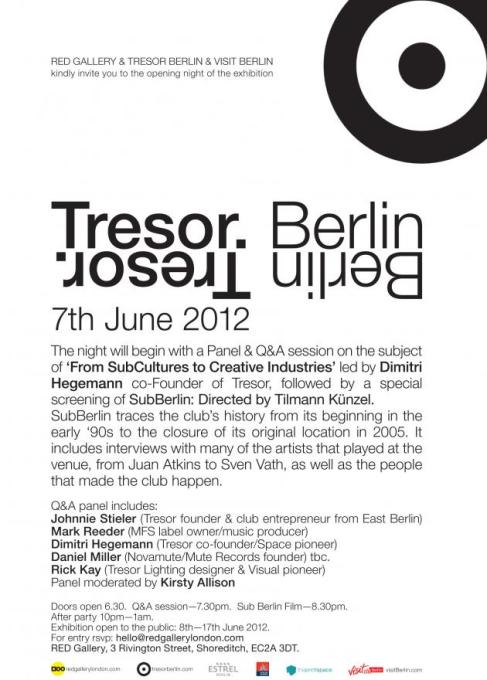
After writing the Red Gallery book on Shoreditch last year, I was delighted to be interviewed by Andrew Mark Corkery for this three-parter comparing Shoreditch with his hometown of Fishtown, in Philadelphia…
The last chapter is my favourite. And there’s also this lil film he put together with me n the artist/editor of Dark Times, Paul Sakoilsky.
http://spiritnews.org/articles/a-fish-out-of-water-spirit-reporter-discovers-another-fishtown-across-the-pond/
A Fish Out of Water: Spirit Reporter Discovers Another Fishtown Across the Pond
|
BY ANDREW MARK CORKERY | JUNE 17, 2015

A street festival in Fishtown, and a street festival in Shoreditch.
A street festival in Shoreditch, and a street festival in Fishtown
Art galleries, coffee shops and street art. Community gardens, street food festivals and First Fridays. Start-up tech companies, converted warehouses and creative spaces. You may think theses elements describe the vibrant community of Fishtown, but not in this case. What I’m actually describing is a community similar to our Riverward, only this one is more than 3,000 miles and an ocean away in London, United Kingdom.
In this “A Fish Out of Water” series, we’ll take a look at this far away neighborhood called Shoreditch, see what similarities we can find between it and Fishtown and maybe even learn a thing or two from that community’s developmental process.
But why compare these two communities? Are they really that similar?
According to Fishtown resident Nadia James, they are.
“I actually just came here visiting a friend and never really considered [living in] Philadelphia at all,” James said. “But I came to Fishtown because it specifically reminded me of where I used to live in London—an area called Shoreditch.”
James had lived in London for a couple of years, but a desire to start her own business led her back home to North Jersey where she launched her content marketing consultancy firm, Griot Digital. Not long after starting up, James found a new home in Fishtown because it possessed the same creative business environment she loved back in Shoreditch. Today James serves customers like Rutgers University, SemperCon and Practice Unite from her office space located at 2424 Studios.
Shoreditch and Fishtown share commonalities throughout their respective histories. Both communities have a long, storied past of being working class neighborhoods.
Charles Booth, in his 1902 book “Life and Labour of the People in London,” described Shoreditch by saying, “The character of the whole locality is working class.” The UK blog Book Snobs say Shoreditch’s “working class roots” remain an element of the community’s vibrant nature today.
Kenneth W. Milano, a local historian who has published six books on Fishtown and other surrounding neighborhoods, characterizes the Riverwards’ roots in similar terms.
“It’s always been a working-class community,” Milano said. “You have families from the 1730s that are still living here. I think it goes to show the character of the people of Fishtown and the attachment to their community. [It is] a 275 year-old working-class neighborhood.”
Conrad Benner, an artist and street photographer, grew up in Fishtown and his family still lives in the community. Benner remembers how his father installed fire alarms for a living and his mother worked at a bank. Together his parents bought their house in the neighborhood during 1970s. According to Benner, his family will never leave Fishtown; their attachment to the community has become a large part of who they are as people.

Live music in Fishtown and live music in Shoreditch.
Live music in Shoreditch and live music in Fishtown.
“When I was growing up I really loved it,” Benner said. “I mean, it was definitely rough around the edges, like most American cities at that time, but for the most part [the neighborhood’s residents] were great, loving people.”
Even with these proud working-class traditions and demographics, Fishtown and Shoreditch are also linked by their well-documented past of embracing artistic culture in the community.
It’s not widely known that the first theaters of London were built in Shoreditch. The first of these playhouses was simply and aptly called “The Theatre,” built in 1576. Shoreditch is also partly responsible for breathing inspiration into the man who many would come to regard as one of the greatest playwrights the world has ever known: William Shakespeare. He came to the area as an actor during the 1590s and lived in the community. He wrote a few characters into his plays based on people he had met while living there. Some of his earliest works were even performed regularly in Shoreditch, including Romeo and Juliet.
Milano believes that Fishtown has also nurtured artists and creative people getting their start throughout the neighborhood’s history. He cites influential artists from a more recent history like Frank Bender—who is considered one of the foremost forensic sculptors in American history—as one of the many creatives who have called Fishtown home.
It’s important to note that what’s considered an artistic profession has changed over time; the folks living in Fishtown a few hundred years ago would definitely be considered artists by today’s standards.
“You always had artisans,” said Milano. “You always had craftsmen, cobblers, furniture makers and so forth. But we didn’t bill ourselves as artisans; we were working people with a job. We have always had artists in Fishtown, but it wasn’t an art community. It wasn’t artsy in a sense that it was called artsy. We didn’t have galleries, we didn’t have a scene, but people were definitely artistic.”
The two communities’ storied artistic traditions have stood the test of generations, manifesting their creativity in a number of forms through the openings of boutiques, galleries, cafes and street art.
Philadelphia-based photographer and artist Jen Cleary, recently took a trip to Shoreditch and stressed how impactful the experience was for her own creativity.
“I was told that that’s where the art is, so I just spent a whole day in Shoreditch walking around and shooting as many photos as I could. I remember being like this is a candy store…holy shit,” said Cleary.
“It reminded me of Fishtown. Just so much of it was in one compact area. Like the part next to the Old Street train station in Shoreditch [where] it’s just non-stop street art. That reminds me of underneath the El between Girard and Berks Station.”
It wasn’t until recently, over the past few decades or so, that Fishtown and Shoreditch were openly considered by the public as landmark arts communities with creativity emanating throughout the broader culture of each area. This kind of change doesn’t happen overnight. According to New Kensington Community Development Corporation (NKCDC), more than anything else, it takes years of community development articulated with a vision put in place by people who genuinely care about the community they inhabit.

Row homes in Fishtown and row homes in Shoreditch.
Row homes in Shoreditch and row homes in Fishtown.
Sandy Salzman, a fourth generation Fishtowner, has been Executive Director of the NKCDC since 1998. She credits her community’s progression to its residents as well as partnerships with various city agencies and organizations like The Philadelphia Horticultural Society and Mural Arts.
“When I started [at NKCDC], Frankford Avenue was a mess,” Salzman said. “We decided that we were going to make it into an arts corridor. We didn’t have one gallery; there were no artists living on Frankford Avenue. We didn’t even have a coffee shop.”
In her office Salzman keeps a picture from 1998 of a trash-strewn lot at Montgomery and Frankford Avenues. The photo paints a clear memory in Salzman’s mind and vividly symbolizes the more than 1,100 vacant lots scattered throughout Fishtown during the the 1990s. Close by is another image of that same lot, but in 2004. It shows a starkly contrasting view of an upstanding and well-tended pocket park with several trees that continue to grow there.
Shoreditch’s similar transformation was put into words by Wong Joon Ian, an East London based journalist, at the start of his article “Gentrification Without Displacement in Shoreditch,” published in the Center for Urban and Community Research’s blog.
“First came the Young British Artists, then it was Banksy and his cohorts,” Ian said. “Now, it’s the million-dollar startups of Silicon Roundabout. Shoreditch and its brick-walled Victorian warehouses have been branded a cultural quarter since the Young British Artists moved into the hollowed out, lightly industrial area on the City’s edge in the early 90s.”
Kirsty Allison was one of those Young British Artists and is now a professor, filmmaker and writer, with articles appearing in publications like The Guardian and a recent book entitled “Making Something Out of Nothing: Red Gallery Shoreditch.”
Allison believes the Young British Artists undoubtedly took ownership of the community and laid the groundwork for transforming Shoreditch into what it is today.
“[Shoreditch] used to be a lot more black and white, but now it’s very, very colorful,” Allison said. “It’s a very fluid area, which means it contextualizes to whatever is around it, and whatever is incoming into the community. It adapts naturally.”
As the neighborhood adapts, so do its businesses, with new tech startup companies like Soundcloud bringing more creative energy to an area well known for its entrepreneurial spirit.
“There are so many tech companies now, which are really part of creative industries. They are the kind of business side of creativity,” Allison said.
In 2013 the Silicon Roundabout of Shoreditch brought 15,720 new tech/creative startup companies into the community, making it the most popular and sought-after startup destination in all of the UK.
While the number of tech startups in Fishtown isn’t quite as staggering, there has been an influx of companies coming to the area, partly because the neighborhood falls under Philadelphia’s Keystone Innovation Zones—geographic zones where young tech and life science companies can apply for up to $100,000 of saleable tax credits. Tech companies in Fishtown include Boxter, Bluecadet, Pixel Parlor, and 3D Printing Dog, among other new and creative businesses popping up at places like 2424 Studios.
According to Fishtown resident Nadia James, another element that makes the local tech startup scene so incredible is the sense of camaraderie and passion she experienced first-hand during Philly Tech Week.
“I came to [Philly Tech Week] and everyone was really open and supportive when I was telling them I was starting my consultancy company, so I just knew this would be a great place to start my business,” James said.
She added:
“What I also really liked about Philly, particularly in Fishtown, is that you get a small community feel even though you are in a big city, and that’s probably the biggest thing I loved about London,” said James.
After moving back from London, James wanted to find someplace similar to the area of Shoreditch. Being a North Jersey native, New York City seemed like the obvious choice. But The Big Apple just felt like too big of a place and lacked a sense of community.
“I mean, you can live in a borough but it does not necessarily mean you get to know the people around you and feel like you know you are a part of something,” James said. “I felt like that in Shoreditch—a neighborhood where I could meet people. When I moved to Fishtown I felt the exact same way.”
This sense of community is fostered in several ways: First Fridays are staples of the monthly calendar in both Shoreditch and Fishtown, and an important component of how the arts stay in focus and at the forefront of the community. According to James, both areas’ First Fridays are nearly identical in layout, setup and overall community vibe:
“Free wine and beer, you just walk around the same little streets. It’s very close together and you talk to people.”
As James continues living in Fishtown, she wants to play a role in adding more elements to the already dynamic nature of her community, especially relating to London’s work culture. James was an account manager for Linkedin, a slightly stressful position at times, but she notes that on random sunny days (which can be rare in London) her manager would tell everyone busy at work to leave the office.
“Everything that I experienced there I want to have for the people that work for me here,” said James.
Workplace etiquette and random lunches aside, James’ attraction to living in Shoreditch came from its blending the conventional with the alternative. She sees the same synergy in Fishtown through the colorful variety of people who call the neighborhood home.
“I don’t really fit into either box personally but I enjoy different aspects of both. So I may be going to a pub that’s full of yuppies [or] I may also like to go to a dive bar that’s maybe full of hipsters. I felt like I could get all of that in Shoreditch and I feel the same way about Fishtown.”
Back in London, writer Kirsty Allison believes that this mix of culture and creativity plays a large role in what makes communities like Shoreditch and Fishtown so inviting and unique.
“It’s about maintaining a spirit of creative community and freedom within a space that should be available for everyone. It’s about cultural equality as much as anything,” said Allison. “There is an important part of cultural progression that needs freedom to articulate itself, and needs space where you can be free to express yourself beyond existing paradigms.”
Allison stresses the life-changing effect that communities like Shoreditch and Fishtown have on the folks who are a part of them. When speaking about Shoreditch directly, Allison stated: “It’s created me.”
“I would not have written my book—it’s a product of a friendship through the community. It’s also inspired my fiction work. My whole novel is set in 1990s Shoreditch,” said Allison. “I would not be who I am without having had the experience and freedom that I have had here. It’s given me my identity really.”
Conrad Benner, photographer and lifelong Fishtowner, echoes the same sentiment about his own home and how it has effected his own personal and artistic growth.
“I would definitely not be the person that I am today if it were not for growing up in Fishtown.” said Benner. “It’s not just the sense of the community and the support that community inspired, which has shown itself throughout the years. It’s also about what it taught me about the world. I saw the world first through the eyes of Fishtown.”
Want to learn more about Shoreditch and the ways it compares to our home in the Riverwards? Check out Spiritnews.org in the coming weeks for more in this “Fish Out of Water” series.
—
http://spiritnews.org/articles/a-fish-out-of-water-part-two-class-and-sustainability/
A Fish Out of Water Part Two: Class and Sustainability
|
BY ANDREW MARK CORKERY | JULY 2, 2015
“A Fish Out of Water” is our ongoing series describing the similarities between Fishtown and a community in London called Shoreditch. The series will explain how these communities have adapted over time to the challenges they face. Part One described similarities of both communities through the lenses of their creative environments, illustrious histories, working-class traditions and deep impressions left on those who have lived there.

Photos from Shoreditch courtesy Jason McGlade and Kirsty Allison. For full image credits, please refer to the free digital edition of Making Something Out Of Nothing.
These hip and developing communities, heralded as they are, often bear the brunt of divisive generational and class divides. In particular, the alienating divide of cultural stereotypes provoke deep-seated misunderstandings, frustrations, and occasionally points of anger in those who inhabit these neighborhoods.
This section of “Fish Out of Water” focuses on exposing what might cause these tensions in the community and how best to cultivate understanding through a culture and policy perspective. Beneath the tension and misunderstanding there are new, albeit tentative, perspectives circulating. And in it, the power to make these communities sustainable for the long term by harnessing the same creativity and diversity that made them so dynamic.
When speaking on diversity and its role in the community, Nadia James had this to say about Fishtown:
“You can have racially diverse communities but very rarely…is it also diverse in class. What I love about Fishtown, at least in this moment, is that you do still have that class diversity. I think it has a lot to do with the history of Fishtown and that a lot of people have been here for multiple generations,” James, a former Shoreditch and current Fishtown resident, said. “You have a working class and a young professional class and they are all coming together.”
Her claim is backed by statistics. Census data shows a noticeably wider spectrum of median household income, ethnicity, length of housing tenure and education level in Fishtown than in nearby neighborhoods like Mayfair.
Conrad Benner is an artist and photographer who grew up in Fishtown and still lives in the community today. Benner agrees that this blending of cultures and classes has had a unique role in shaping the community but feels as though he has experienced the community through a different lense than James. Benner believes that the cultural makeup of Fishtown is not something that can be garnered from the narrow context of these census tracts or the framework that broader society uses to define class.
“[There’s] this whole idea that working class families are different than the people moving in because [the newcomers] are creative. I would almost argue that the people moving in are in fact the new generation of working class,” Benner said. “This is the economy of the 21st century. I work in digital marketing and these are the jobs that are available to us. Everyone is working class.”
Kirsty Allison, an English writer, professor and filmmaker, echoes similar sentiments from across the pond:
“I wouldn’t use class to determine people. I just think that the class categories have become outmoded and they are no longer relevant.” said Allison. “The creative people that are actually doing innovative work rarely have that much money.”
As we reported in Part One, Shoreditch boasts a large population of creative people working in an array of tech, art and creative industries.
According to statistics from accountants at UHY Hacker Young reported in London’s Financial Times, 15,620 new businesses were set up in and around Shoreditch between 2013 and 2014. In addition, 305,000 sq. ft. of office space was rented to startups, about double the amount in 2012. With this new, booming industry Shoreditch has been dubbed by many as the primary hotspot of digital creative industries in all of the UK.
Regardless of Shoreditch and Fishtown’s ongoing development of industry and the class discussion that surrounds it, both communities have a distinct collaborative nature where everyone seems to help one another.
As James puts it, “People are trying to build one another up.”
As people build each other up in a personal and professional sense, the ways in which each community has been structurally built up differ. The types of buildings and construction projects happening in each area and how those spaces function within the community highlight some of the major differences between Shoreditch and Fishtown.
Fishtown has always been a largely residential area with rowhomes and condos making up a large amount of landscape, still remaining that way even following the continuing influx of people to the community. As more people have moved into the neighborhood, so has development of additional low-rise residential spaces to accommodate the growing population.

Photos from Shoreditch courtesy Jason McGlade and Kirsty Allison. For full image credits, please refer to the free digital edition of Making Something Out Of Nothing.
In Shoreditch it’s a much different tale. Before The Young British artists moved there in the 1990s there was actually not a lot of residential space in Shoreditch. Because of that, the area and its property values are currently booming and developers are flocking in to build more.
“There is a supply issue and there is also a rent issue because of the way that housing is done in London and in the UK. There is not enough social housing in general and the total amount of housing is also going up and as a result you have a crisis from the supply side,” Wong Joon Ian, an East London-based journalist, said. “Add to this a spike in global demand because global investors view London property as a desirable and safe asset”.
It’s not just that people are being displaced and forced out of their houses only because the rent is rising. Ian says it also has to do with the fact that a large amount of new residential space is being built to accommodate the influx of high-income people moving into the area, most of which is high priced real estate.
“You have declining supply and increasing demand from outside. So the people who do get squeezed are the people who don’t have the capital to compete with the demand and don’t have the capital to find new supply,” said Ian. “But you have to ask yourself who is that new supply for, who can afford that new supply?”
Some would say the biggest and most controversial “new supply” of housing and real estate on the horizon in Shoreditch is the Goodsyard, an £800 million ($1,254,240,000) mixed-use scheme by joint developers Ballymore and Hammerson. As reported in the Financial Times of London, if the project obtains planning permission more than 1,450 new homes and 600,000 sq ft of office space are set to be built.
“There’s a lot of money in Shoreditch at the moment,” said Matt Cobb of Hatton Real Estate in the FT. “That can be a good thing and it can be a bad thing, because whatever you decide to build you have to make sure you won’t be destroying what made the area desirable in the first place.”
Ian stresses some alternative ideas about the gentrification of Shoreditch in his article, Gentrification Without Displacement in Shoreditch written for the Center For Urban and Community Research Blog.
“Unlike the narrative of commercial or industrial gentrification, in this case, the displaced property owners welcomed the move out of the area. Again, this upsets the narrative of wealthier incoming gentrifiers displacing existing residents,” said Ian. “In the case of Shoreditch there were no existing residents to displace”.
In Fishtown, Conrad Benner believes the traditional narrative of gentrification in his own community may not fully apply either. Benner critiques the framing of gentrification put forth by outlets that influence public perception and offers his own counter argument.
“The media sort of projects this idea that when gentrification happens it’s this clash between cultures, but that’s just not what I have experienced,” said Benner. “On a human-to-human scale and as someone who grew up in the neighborhood, I am very excited to see the way that [Fishtown is] changing in positive ways. Business are opening up, Girard Avenue is getting redone, the highway (I-95) is getting redone, more and more transportation options are becoming available and all of these things are happening because there is a renewed energy in the neighborhood.”
While Nadia James hasn’t been in the area as long as Benner has, she was in Shoreditch during that neighborhood’s development and feels that Fishtown is starting to reach a similarly uncomfortable level.
“I think that there is actually way too much property being developed in Fishtown right now. Every block I go down I see a new building coming up. The good thing about Fishtown, though, as opposed to Shoreditch, is that at least there are the building limitations,” said James.

Photos from Shoreditch courtesy Jason McGlade and Kirsty Allison. For full image credits, please refer to the free digital edition of Making Something Out Of Nothing.
There are two 42-story skyscrapers planned for development in Shoreditch that have been set on a timeframe to be completed by the late 2020s, as reported by The Independent. This would never be the case in Fishtown though, thanks to specific zoning classifications in the area that would not permit the construction of the skyscrapers currently set to be built in Shoreditch. The only designated zoning code in Fishtown that would permit something close to the 42-story Skyscraper in Shoreditch would be designation SP-ENT.
There are also additional checks and balances on the development of larger buildings in particular areas, including Fishtown. One of these checks that involves the community most is Civic Design Review, a process that occurs when a plan requires both an appeal and a design review. Then there are public meetings and hearings which occur before a Zoning Board, and when City Council considers amending the zoning code they do so with input from the public. Through these processes, the public has some power to influence the development of their own community.
“I think here in Fishtown people want it to be more balanced though so it doesn’t turn into the next Brooklyn, or I mean even just thinking of other Philadelphia communities. There is a reason why people are paying to live here and not Rittenhouse Square,” said James.
In Shoreditch, a number of people in the community sympathize with this same view but within the context of their own community. The Shoreditch Community Association sees the area’s continued development as something that needs to be guarded, regulated and watched closely for foul play.
“There isn’t enough balance on the development. The Council (local government) wants to see only commercial space, the estate agents and developers only want to see residential units—for overseas investors to pay over the odds for but never live in. And the historic locals are trying to protect the historic balance of the area,” said Rachel Munro-Peebles, a leading member of the Shoreditch Community Association. “Everyone, big businesses, companies, and people wants a slice of Shoreditch but it’s only the people who live and work here who understand it and want to protect it.”
Kirsty Allison was part of the movement that lead to Shoreditch becoming cool, and understands the importance of keeping a watchful eye on development. But she also notes that there is an invariable part of community regeneration that we must all come to accept on a fundamental level in order to have progress.
“Change is change, and that’s the thing about it,” said Allison. “That’s the issue with rent control and where artists fit into a community, and whether society values it enough. A lot of people would say that rent control is necessitous to retain a community. There are still a lot of artists and creatives living around here but I don’t know who could get a warehouse now, they would move further out,” said Allison.
With that said the cost of a one bedroom flat in Shoreditch varies anywhere from £335,000 ($513,488.00) to £725,000 ($1,111,280). Additionally the sizes of these flats are regularly priced at £1351.35 ($2071.35) per square foot.
Whatever the multiplicity of factors behind the fundamental changes in communities, it’s imperative that everyone be looking at the issues we all face today through a sense of broader contextual vision.
“Look at how we arrived here. What are the factors driving it? These are global trends and recognizing that, these may not be issues a local council can solve on their own. Maybe there needs to be some redistribution of legislative power or something,” said Wong Joon Ian.
As real-estate prices are skyrocketing in Shoreditch, the market in Philly remains sustainable by comparison. Robert Beamer lives in a repurposed residential warehouse in Fishtown. He sees Philadelphia and Fishtown as a much more economically sustainable environment to live than most other high-priced cities in the U.S., and others internationally. In fact, it was Philly’s affordability that brought him here in the first place.
“Most cities are intensely crowded and expensive,” Beamer said. “But here I can go to a show and see a world-renowned artist, then I can also go to an amazing dinner and not pay an arm and a leg for it and the dinner is going to be really amazing.”
James concurs with Beamer and sees our community as an area that may really remain less affected by these global trends noted by Ian in Shoreditch, in relation to affordability and sustainability. She sees Fishtown as somewhat immune to the high, unaffordable nature of city life that some believe is currently affecting Shoreditch. She notes that Fishtown is not next to such a massive financial hub like London, which in her understanding makes it easy to develop since financiers and developers are only a 10 minute train ride away.
“Somewhere like New York or London, they are international cities and Philly is more of a regional city. So I think that plays a massive role in the development of each city because you have all these foreign investors in these other two cities. And yeah they have the money to throw at Brooklyn or Shoreditch and make it what it is becoming. As where in Philadelphia we don’t have the same kind of people, ” said James. “There are very few large enterprises here in Fishtown and for this area thats a good thing. Because when you’re small you can’t bully and say this is what we are doing.”
But regardless of Fishtown’s fundamental and developmental differences to Shoreditch and other large cities globally, by the numbers Fishtown is actually becoming more unaffordable. From the 2003 to 2013 Fishtown saw a staggering 270% increase in home property value.
Local historian Kenneth W. Milano has seen this first hand.
“What does a working person make, $50,000, $40,000? The point is that a working person cannot afford a house in Fishtown, can’t really even afford a house in Kensington,” said Milano. “So you would need 20 percent down to buy a house, 10 percent in a better economy, and then pay $1,000 a month for every $100,000 you borrowed. Well $1,000 a month is a lot of money. So I mean thats still only a $120,000 house, that’s a little row house in Fishtown, not even Fishtown…Kensington.”
Here lies the issue at heart—gentrification and displacement in both Fishtown and Shoreditch.
Some believe these factors could risk pushing members of each community apart from one another if not handled and understood through the proper framework.
James feels, having lived in Shoreditch and now living in Fishtown, that both communities confront the issues of gentrification and displacement on a daily basis and that they have varying degrees of societal impact.
“It comes down to the economics of things. So if the rent is too high then people and business can’t stay here. And it’s the smaller businesses that make it what it is,” said James. “If you have people who are really only interested in themselves and what they do, then those are the same people who don’t mind there being monopolies. But one thing I’ll say about Philly and Fishtown is that everyone is really collaborative and I think that is because the economy has been small”.
With regards to people being displaced in Fishtown, Benner feels it’s an issue that warrants a certain level attention given the climate of gentrification that the community is experiencing. But at the same time he sees his own experience first hand as an anecdote that counters full fledged displacement.
“It’s a question and issue that really needs a study but I can say anecdotally it has not pushed my parents out and it has not pushed me out. And definitely the block I grew up on the vast majority of people I grew up with on that block still live there,” said Benner. “Again, I think that Fishtown has had so much space to grow that there’s room for more people.”
In spite of the fact that Benner feels strongly that there are alternative experiences and viewpoints revolving around society’s limited contextual understanding of what constitutes displacement in Fishtown, he notes though that the increases in the cost of living more generally are, without question, cause for concern.
“An apartment that I would look at three years ago would have been at least $300 to $400 cheaper then it is today. And I do really worry that may really not need to be the case,” said Benner.
Crossing the pond once again back in Shoreditch, Allison believes wholeheartedly that regardless of the community under no circumstances should that kind of systemic and systematic injustice “be the case” as Benner puts it.
“It does not matter who they are no one should be living in a squallored environment if there are people living next door living a good lifestyle. Everyone in an environment should look after each other it does not matter where you are,” said Allison.
“The issue is though whether or not there is a divide being created in the community between the people who have every right to live here and who have their community here and the people who are being sold the lifestyle here for a million pound for a flat. It’s gone to a different level of greed…That is what will destroy it too is mass greed.”
http://spiritnews.org/articles/a-fish-out-of-water-spirit-reporter-discovers-another-fishtown-across-the-pond-part-3/
A Fish Out of Water: Spirit Reporter Discovers Another Fishtown Across the Pond (Part 3)
|
BY ANDREW MARK CORKERY | JULY 20, 2015
SOLUTIONS, DISSENTING VOICES AND CULTURAL OWNERSHIP
Despite the varying levels of affordability and overall differences in the sustainable economic climate of both Fishtown and Shoreditch noted in last weeks (Fish Out of Water Part 2), many whom we spoke with believe these communities are prime examples of how people work together to create the essence of a neighborhood. In addition people noted that communities like these are needed on a fundamental level because of the way they are able to help guide society at large.
The way these communities often look to guide our society is through their dissent.
President Deight D. Eisenhower once described “dissent” as inherent within American culture.
“Here in America we are descended in blood and in spirit from revolutionists and rebels – men and women who dare to dissent from accepted doctrine. As their heirs, may we never confuse honest dissent with disloyal subversion,” said Eisenhower.
Despite Ike’s heartfelt patriotic characterization of “descent” the phrase “dissenting voices” however is one that over the years is sometimes confused, not fully understood, and in conversations about communities is often not invoked for fear of upsetting the status quo.
Through this series of stories though it’s clear that time and time again when offered the status quo Fishtown and Shoreditch often opted to reinvent themselves, staying vibrate and taking on an entirely different approach to community.
However the most basic components of the phrase dissenting voices remain murky at best. When pressed for a definition one will find some variation in meaning that includes straying from the beaten path of authority and utilizing speech in some form to do so.

Spirit Journalist Andrew Corkery and Professor Kirsty Allison
Regardless of how general the definition it still paints a focused clear picture of what the communities of Fishtown and Shoreditch offer to the rest of the world, a vigilant dissenting voice on issues and culture within the larger spectrum of modern global society.
One facet making up the dissention within both Fishtown and Shoreditch is how the communities, to a certain extent, exist within an alternative economic landscape.
Nadia James, a former Shoreditch resident and current Fishtown resident, believes that the fashion and art sectors of these neighborhoods contribute to their environment of independent sustainability.
“It’s not going to be a Forever 21 that has a small up-and-coming artist have a pop up shop in the community, it’s going to be another independent boutique owner,” said James. “So you need those small small local businesses there to sustain each other.”
Across the pond in the UK , professor, writer, and filmmaker Kirsty Allison also sees those same sustainable independent economic models as prevalent elements of their developing community culture in Shoreditch.
Allison’s recent article published in The Guardian entitled “The Cultural Revolution Starts Here” discuss particulars of how many in the Shoreditch see themselves as a part of a more all encompassing economic, political and social movement, dissenting against status quo power structures.
“East London was the first zone to co-opt creative people into its ‘regeneration’ program[me]. The current phase witnesses remaining native communities and cultural migrants rebelling against economic apartheid, creating an urban laboratory of flexible arts spaces for symposiums, screenings, street-food festivals – anything really … IF YOU’VE GOT NOTHING, THERE’S NOTHING TO LOSE is painted high by artist-in-residence, Chris Bianchi of Le Gun,” wrote Allison in The Guardian.
Back in Philadelphia, resident Jen Cleary believes art is what drives the multifaceted discussion fueled by these dissenting voices. She feels it furthers those conversations outside the community as well, and into a dialogue within broader society.
Cleary is a photographer and spends a lot of time in Fishtown and other areas of the city photographing street art. Earlier this year she also took a trip to Shoreditch to experience the street art like the piece mentioned by Allison above, among many others.
She focuses on street art’s unique ability to embody dissenting voices through a medium of social and political commentary that seeks to derive the impetus for societies structural change and progression.
“It comes from a place of rebellion, its the art of rebellion really, and being able to say something through a visual medium,” Cleary said.
Cleary notes that important issues throughout history were brought to the forefront of society’s collective consciousness through foundations laid by street art in years past, which continue to influence other street arts projects today.
“In the 80s [prominent gay-rights activist and artist] Keith Haring had a lot of things to say about how gay men were treated during the HIV Crisis in New York. It was huge,” said Cleary. “And now were talking about people in Shoreditch and how they really don’t think the Tory Party [UK’s conservative political party] treats them well.”
Creativity particularly in the form of street art in Cleary’s view invites people from all walks of life in a simple emotionally powerful manner, to question the world around them and look for solutions within themselves to help solve society’s complex problems. She also sees how similar forms of street art to those mentioned during the 80’s HIV Crisis are represented through different forms of creativity in Fishtown, depicting today’s pressing social issues.
“At one point there were these little cat calls that were on the ground, and you would find them at every bus stop,” Cleary said. “As a woman that kinda shit can happen to you a lot. They were just little pieces of art spray painted on the ground with a stencil that would give you little things that you could say back to Catcallers. It was good to see, it lets you know that you are not alone and it wasn’t just you. And it opened up the dialogue.”

Shoreditch London
“The funny thing is that it became a city-wide action to place anti-catcalling signs on all SEPTA transit. So its always a political statement, which we need we always need. Every society needs a dissenting voice.”
Street art may be providing a dissenting voice in these hip communities. According to Conrad Benner, a local photographer, these voices are even more dignified in areas like Fishtown because the artists live within the community and respect it. While some may interpret street art as vandalism, the artists who create it do so in a way that is beautifying and thought provoking.
“I think one of the greatest things about artists that live in Philadelphia is that by and large they pay respect to people’s private property and to businesses,” said Benner. “So when they put up a wheat paste and a sticker or some stencils, generally speaking, it’s on abandoned spaces which are sort of abundant in Fishtown. So it’s exciting to watch.”
Robert Beamer lives in a formally abandoned warehouse in Fishtown that has since been converted into creative living space. Beamer agrees with both Cleary and Benner in that the development of dissenting voices along with creativity’s place in that process is not only exciting to watch, but even more inspiring to be a part of.
“Living in a building where every other apartment is filled with other artists, the ability to bounce your ideas off people, to throw a flyer on the wall and know that people are going to see it, it lends itself to creativity.”
In the eyes of those living there, places like Fishtown and Shoreditch are communities that celebrate their residents and the lives they lead. In addition they often function as an olive branch extending the impetus for societal progression in one form or another to those the world over.
Still many questions face these communities today. How do we keep these communities functioning in a manner that benefits all who are apart of them, along with continuing their substantive and positive impact on global society, rather than benefiting just a few?
How can we ensure that vibrant and necessary communities like these will stay at arm’s length from people only looking to take advantage of their message by commodifying the “merchants of cool” surrounding the fabric of the community?
How can we know that 20 years or more from now places like Fishtown and Shoreditch will still remain viable and sustainable for all people?
Having lived in Shoreditch and now calling Fishtown home, James feels she knows part of the answer.
“I think you need a balance. I think Fishtown does that really well. For example you can have the bigger establishments but then you can have a small, little Indian restaurant like Ekta,” said James. “Most of the companies I have seen, they all came up because other people helped them. They understand the value of helping other people, playing it forward, and giving back.”
In Shoreditch Allison agrees with the principle of balance in theory, but offers advice seeing changes play out in her community within a somewhat uneven landscape filled with a seemlinging endless amount of individual interpretations.
“Everyone has their own narrative about what has happened. I don’t know if I am into mass sweeping generalizations about do’s and dont’s for anyone but this idea of ownership is where all the problems start. But what is ownership? Is it a financial investment, or is it creative ownership? So that goes back to the idea of the social and cultural economy. How do you measure those though?” said Allison.
Allison sees cultural ownership as an element that factors heavily into the complicated equation of keeping communities sustainable, but still senses an innumerable amount of questions about how to quantify the concept.
“Do you do it by the amount of time you invest into something, do you go Malcolm Gladwell and say it has to be 20,000 hours you put into Shoreditch to make yourself part of Shoreditch? How does that work?” said Allison. “I think that people still need a space to be a part of the community, and to have a space that is a long term investment. That would be a really radical thing to do.”
Beamer in Fishtown believes what Allison advocates for should not necessarily be such a radical decision, but unfortunately in our modern global society it is. That being said, Beamer recognizes that sustainability is in fact the most sensible choice to make.
“You need to stick around the neighborhood that you helped create, and we should learn from those mistakes and missed opportunities of other cities,” said Beamer. “There has to be some sort of a fusion between making a lot of money from these spaces and keeping them around.”



